1 Limits And Continuity 2 The Derivative 3 Topics In Differentiation 4 The Derivative In Graphing And Applications 5 Integration 6 Applications Of The Definite Integral In Geometry, Science, And Engineering 7 Principles Of Integral Evaluation 8 Mathematical Modeling With Differential Equations 9 Infinite Series 10 Parametric And Polar Curves; Conic Sections 11 Three-dimensional Space; Vectors 12 Vector-valued Functions 13 Partial Derivatives 14 Multiple Integrals 15 Topics In Vector Calculus expand_more
5.1 An Overview Of The Area Problem 5.2 The Indefinite Integral 5.3 Integration By Substitution 5.4 The Definition Of Area As A Limit; Sigma Notation 5.5 The Definite Integral 5.6 The Fundamental Theorem Of Calculus 5.7 Rectilinear Motion Revisited Using Integration 5.8 Average Value Of A Function And Its Applications 5.9 Evaluating Definite Integrals By Substitution 5.10 Logarithmic And Other Functions Defined By Integrals Chapter Questions expand_more
Problem 1QCE: In each part, use the partition of 2,7 in the accompanying figure. (a) What is n , the number of... Problem 2QCE: Let fx=2x8 . Use the partition of 2,7 in Quick Check Exercise 1 and the choices x1*=2,x2*=4,x3*=5,... Problem 3QCE: Use the accompanying figure to evaluate 272x8dx Problem 4QCE: Suppose that gx is a function for which 21gxdx=5and12gxdx=2 Use this information to evaluate the... Problem 1ES: Find the value of
(a)
(b) .
Problem 2ES: Find the value of (a) k=1nfxkx (b) maxxk .... Problem 3ES: Find the value of (a) k=1nfxkx (b) maxxk .... Problem 4ES: Find the value of (a) k=1nfxkx (b) maxxk .... Problem 5ES: Use the given values of and to express the following limits as integrals. (Do not evaluate the... Problem 6ES: Use the given values of and to express the following limits as integrals. (Do not evaluate the... Problem 7ES: Use the given values of and to express the following limits as integrals. (Do not evaluate the... Problem 8ES: Use the given values of a and b to express the following limits as integrals. (Do not evaluate the... Problem 9ES: Use Definition 5.5.1 to express the integrals as limits of Riemann sums. (Do not evaluate the... Problem 10ES: Use Definition to express the integrals as limits of Riemann sums. (Do not evaluate the... Problem 13ES: Sketch the region whose signed area is represented by the definite integral, and evaluate the... Problem 14ES: Sketch the region whose signed area is represented by the definite integral, and evaluate the... Problem 15ES: Sketch the region whose signed area is represented by the definite integral, and evaluate the... Problem 16ES: Sketch the region whose signed area is represented by the definite integral, and evaluate the... Problem 17ES: In each part, evaluate the integral, given that fx=x2,x0x+2,x0 (a) 20fxdx (b) 22fxdx (c) 06fxdx (d)... Problem 18ES: In each part, evaluate the integral, given that fx=2x,x12,x1 (a) 01fxdx (b) 11fxdx (c) 110fxdx (d)... Problem 19ES: Use the areas shown in the figure to find (a) abfxdx (b) bcfxdx (c) acfxdx (d) adfxdx Problem 20ES: Use the areas shown in the figure to find (a) abfxdx (b) bcfxdx (c) acfxdx (d) adfxdx Problem 21ES: Find 12fx+2gxdx if 12fxdx=5 and 12gxdx=3 Problem 22ES: Find 143fxgxdx if 14fxdx=2 and 14gxdx=10 Problem 23ES: Find 15fxdx if 01fxdx=2 and 05fxdx=1 Problem 24ES: Find 32fxdx if 21fxdx=2 and 13fxdx=6 Problem 25ES: Use Theorem 5.5.4 and appropriate formulas from geometry to evaluate the integrals. 1345xdx Problem 26ES: Use Theorem 5.5.4 and appropriate formulas from geometry to evaluate the integrals. 2213xdx Problem 27ES: Use Theorem 5.5.4 and appropriate formulas from geometry to evaluate the integrals. 01x+21+x2dx Problem 28ES: Use Theorem 5.5.4 and appropriate formulas from geometry to evaluate the integrals. 302+9x2dx Problem 29ES: True-False Determine whether the statement is true or false. Explain your answer. If fx is... Problem 30ES: True-False Determine whether the statement is true or false. Explain your answer. It is the case... Problem 31ES: True-False Determine whether the statement is true or false. Explain your answer. If the integral of... Problem 32ES: True-False Determine whether the statement is true or false. Explain your answer. The function... Problem 33ES: Use Theorem 5.5.6 to determine whether the value of the integral is positive or negative. (a)... Problem 34ES: Use Theorem 5.5.6 to determine whether the value of the integral is positive or negative. (a)... Problem 35ES: Prove that if f is continuous and if mfxM on a,b , then mbaabfxdxMba Problem 36ES: Find the maximum and minimum values of x3+2 for 0x3 . Use these values, and the inequalities in... Problem 37ES: Evaluate the integrals by completing the square and applying appropriate formulas from geometry.... Problem 38ES: Evaluate the integrals by completing the square and applying appropriate formulas from geometry.... Problem 39ES: Evaluate the limit by expressing it as a definite integral over the interval a,b and applying... Problem 40ES: Evaluate the limit by expressing it as a definite integral over the interval a,b and applying... Problem 41ES: Let fx=C be a constant function. (a) Use a formula from geometry to show that abfxdx=Cba (b) Show... Problem 42ES: Define a function f on 0,1 by fx=1,0x10,x=0 Use definition 5.5.1 to show that 01fxdx=1 Problem 43ES: It can be shown that every interval contains both rational and irrational numbers. Accepting this to... Problem 44ES: Define the function f by fx=1x,x00,x=0 It follows from Theorem 5.5.8b that f is not integrable on... Problem 45ES: In each part, use Theorems 5.5.2 and 5.5.8 to determine whether the function f is integrable on the... format_list_bulleted
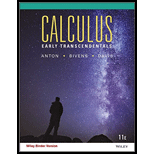

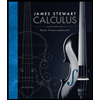 Calculus: Early TranscendentalsCalculusISBN:9781285741550Author:James StewartPublisher:Cengage Learning
Calculus: Early TranscendentalsCalculusISBN:9781285741550Author:James StewartPublisher:Cengage Learning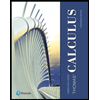 Thomas' Calculus (14th Edition)CalculusISBN:9780134438986Author:Joel R. Hass, Christopher E. Heil, Maurice D. WeirPublisher:PEARSON
Thomas' Calculus (14th Edition)CalculusISBN:9780134438986Author:Joel R. Hass, Christopher E. Heil, Maurice D. WeirPublisher:PEARSON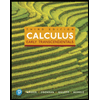 Calculus: Early Transcendentals (3rd Edition)CalculusISBN:9780134763644Author:William L. Briggs, Lyle Cochran, Bernard Gillett, Eric SchulzPublisher:PEARSON
Calculus: Early Transcendentals (3rd Edition)CalculusISBN:9780134763644Author:William L. Briggs, Lyle Cochran, Bernard Gillett, Eric SchulzPublisher:PEARSON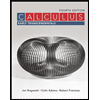 Calculus: Early TranscendentalsCalculusISBN:9781319050740Author:Jon Rogawski, Colin Adams, Robert FranzosaPublisher:W. H. Freeman
Calculus: Early TranscendentalsCalculusISBN:9781319050740Author:Jon Rogawski, Colin Adams, Robert FranzosaPublisher:W. H. Freeman
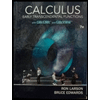 Calculus: Early Transcendental FunctionsCalculusISBN:9781337552516Author:Ron Larson, Bruce H. EdwardsPublisher:Cengage Learning
Calculus: Early Transcendental FunctionsCalculusISBN:9781337552516Author:Ron Larson, Bruce H. EdwardsPublisher:Cengage Learning




